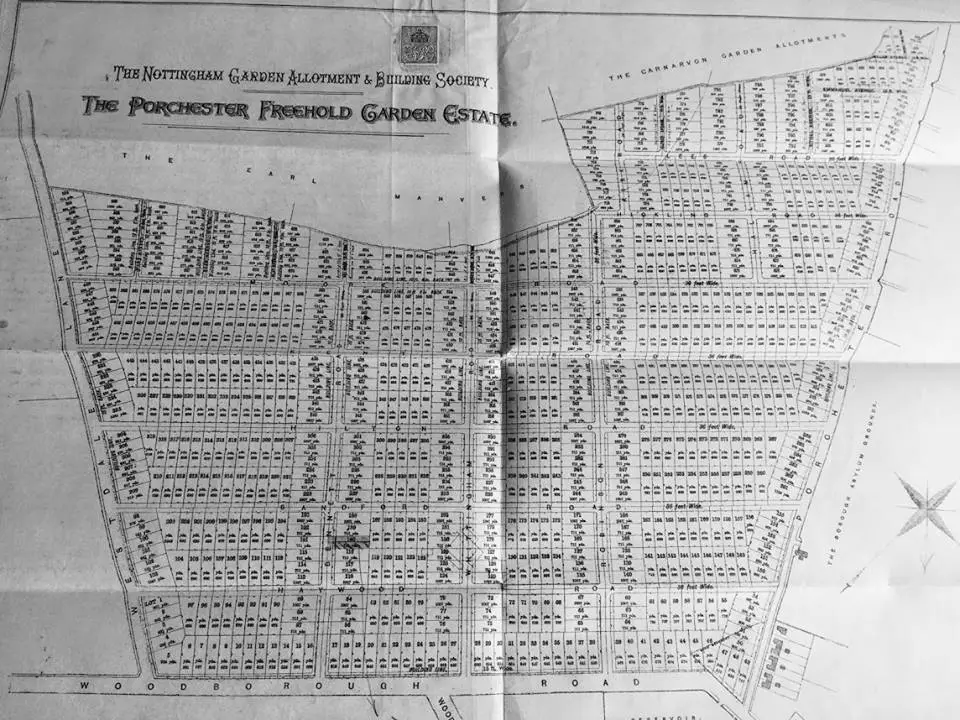It is well recorded how the area of Mapperley known as Porchester Gardens took its name from the Porchester Freehold Garden Estate, the allotment gardens that were established in 1887.
But where did the name Porchester come from?
How about the names Stanhope Road and Chesterfield too?
The answer lies in the wealthy family that owned much of the land around here. Land that included what became the Porchester Garden Estate, so that local working men could spend their free time in a healthy environment and grow fresh produce.
The family was headed by the Earl of Carnarvon, who also held the title of Lord Porchester. The title is still held by his descendents today.
Henry Howard Molyneux Herbert, was the 4th Earl of Carnarvon until 1890. He was born at Grosvenor Square, London in 1831. His wealthy aristocratic family owned large estates of land across the country, including in the Gedling, Shelford and Bingham areas of Nottinghamshire.
Henry Herbert was a leading member of the Conservative Party.
He was twice Secretary State for the Colonies and is credited with the creation of a united Canada.
He also served as Lord Lieutenant of Ireland.

Henry had one son George with his first wife, Lady Evelyn Stanhope. Evelyn was the daughter of Anne and George Stanhope, the 6th Earl of Chesterfield. George was born in 1866.
Note that several of our pubs were also named after aristocrats with connections to the area.
Lady Evelyn died in 1875 and Henry married again 1878.
When George’s grandmother Lady Chesterfield died in 1885, the Nottinghamshire estates at Bingham, Shelford, Gedling, were passed to him. His full name was George Edward Stanhope Molyneux.
The name Stanhope is of course familiar to us in Gedling. We have Stanhope Road and Stanhope School.
A couple of years before his death, Henry Herbert, as Patron of Gedling Church, arranged with the Ecclesiastical Commissioners for the sale of the Gedling Glebe farm to a committee of working men. Tha land was to be divided into 800 garden allotments, payable for by instalments over seven years. This farmland is now called the Porchester Estate, at Mapperley.
Henry died in 1890 (aged 59), with his wealth and title being passed to George Herbert.
In addition to giving his name to Porchester in Nottingham, George Herbert, the 5th Earl of Carnarvon went on to international fame. He became the chief financial backer of Howard Carter’s Egyptian excavations. In fact he died in Egypt at the age of 57.
George Herbert was educated at Eton College and Trinity College, Cambridge. He inherited the Bretby Hall estate in Derbyshire from his maternal grandmother, the Dowager Countess of Chesterfield in 1885, and then the Earldom in 1890.

Taking after his father, George became a great traveller and explorer.
After a terrible motor accident, he devoted his time to researching the ancient history and antiquities of Egypt.
In 1906, in association with Mr. Howard Carter, he applied to the Archaeological Committee at Cairo for permission to excavate at Thebes, and during the ensuing years many valuable discoveries were made by them.
After the 1914-18 war, Lord Carnarvon was granted a concession in the Valley of the Tombs of the Kings.
In 1922, their sixteen years’ work was rewarded by the discovery of the tomb of Tutankhamen

A few months later, Lord Carnarvon was bitten by a mosquito, with fatal results.
Knowing his fate, he said to a friend, “I have heard the call. I am preparing for it,”
With thanks to various sources including nottshistory.org and wikipedia

